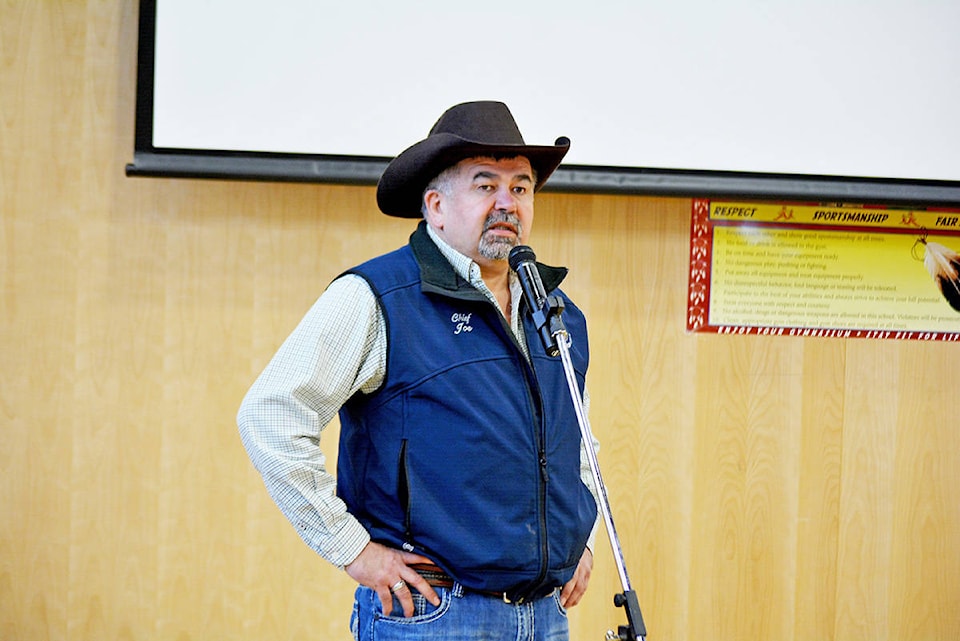A B.C. First Nation is closing the Chilcotin River steelhead trout fishery to its people because of an 81 per cent species decline over the last 18 years.
“Steelhead are facing a serious crisis that cannot be ignored,” said Tsilhqot’in National Government Chair Chief Joe Alphonse Tuesday. “We are imposing an immediate closure on the fisheries for our people. All sectors within government and business need to take this decline in population numbers seriously.”
While the steelhead are viewed as a important recreational fishery in B.C., TNG’s fisheries manager Paul Grinder said the steady decline has impacted First Nations every year, as will the closure.
“It is infringing our right for food. Steelhead has been part of our steady diet every year,” Grinder said. “Unfortunately in the last number of years there have been so many families that have had to abstain from fishing because of our low numbers.”
At this time of year, the last bit of the sockeye salmon that had been caught was running low or was empty, so the arrival of steelhead traditionally was critical to survival.
“It’s a different fish, it’s a trout and is very rich, so that really helped a lot of First Nations families as a food source, as a carryover until the next sockeye season,” Grinder said.
Grinder pegged the decline of steelhead on ocean conditions, which are “of course terrible,” and the bycatch of chum fisheries in the Lower Mainland as the biggest issues.
The last time Grinder himself caught a steelhead was more than 25 years ago.
“That was probably the last time I made an attempt to catch one. I realized where it was at and a number of people that understand it have just stepped away from it.”
Grinder said the steelhead fishery has been closed to non-First Nations since 2012.
Catch and release fishery is a contributing problem because it puts stress on females heading up rivers to spawn with eggs inside them, he added.
“I remember at one meeing an older First Nations gentlemen discussing the decline of the sturgeon in the Lower Mainland said, ‘if your wife is pregnant are you are going to drag her around, pulling her and stressing her out? Because the odds are she’s not going to have her child if she’s pregnant.’ He put it in a blunt way, but it opened up some eyes.”
Chief Alphonse said the Tsilhqot’in territory is at the end of the line for steelhead migration, but the nation is willing to forego its collective Aboriginal right to fish steelhead for food, social and ceremonial purposes.
“We have to make the most sacrifices in protecting this population and we call on all levels of government to improve the health of our steelhead.”
The announced closure by the TNG comes after an emergency assessment done in January 2018 by the Committee on the Status of Wildlife in Canada (COSEWIC) which assessed the Chilcotin River Steelhead Trout as “endangered” and recommended an emergency order under the Species at Risk Act.
There are 58 confirmed steelhead trout in the Chilcotin River, according to the report, noting the estimated mortality rate from all bycatch in commercial fisheries is in the range of 15 to 25 per cent annually.
Read More: BCWF’s steelhead extinction fears confirmed
In 2016, the Ministry of Forests, Lands and Natural Resource Operations Fish and Wildlife Branch released a Provincial Framework for Steelhead Management in British Columbia.
The report provided a provincial approach to steelhead management in an effort to lay out a framework on how the province intended to manage steelhead and steelhead fisheries.
Management of First Nations fisheries in freshwater and marine environments, including steelhead harvest, is primarily the legislated responsibility of the federal government, the report noted.
Read More: Thompson, Chilcotin Steelhead Trout in danger of extinction
Alphonse said the TNG is also calling on the Department of Fisheries and Oceans to eliminate all bycatch from the commercial Pacific salmon fisheries.
“TNG also expects that both the federal and provincial governments, including the Federal Minister of Environment and Climate Change Strategy will engage in a Nation-to-Nation conversation with the Tsilhqo’tin about the future of the Chilcotin River steelhead along with the impact that decisions may on on Tsilhqot’in Aboriginal rights.”
